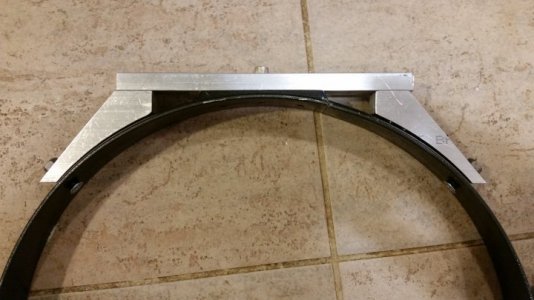Below is a photo of a 'splint' to repair an aluminum casting, the black ring. The ring id is 14.3 inches. The casting is broken just about where the vertical tile line crosses the part. The splint is currently attached on the sides with a 1/4 tapered flat head screw and on top. This is to stablize the part for completing the attachment process.
I would like to add at least more bolts / screws on each side. I am concerned about weakening the casting. In order to make the current screws to fit they will have to be countersunk and a portion of the head ground off.
What alternative methods of attarhment are there?
My thought is more smaller bolts / screws will weaken it less then fewer larger ones would.
(this was the final outcome of an previous project. the 'ears' where desinged with hand coded g-code and machined on a linuxcnc Bridgeport.)
Thanks in advance,
Dan

I would like to add at least more bolts / screws on each side. I am concerned about weakening the casting. In order to make the current screws to fit they will have to be countersunk and a portion of the head ground off.
What alternative methods of attarhment are there?
My thought is more smaller bolts / screws will weaken it less then fewer larger ones would.
(this was the final outcome of an previous project. the 'ears' where desinged with hand coded g-code and machined on a linuxcnc Bridgeport.)
Thanks in advance,
Dan


